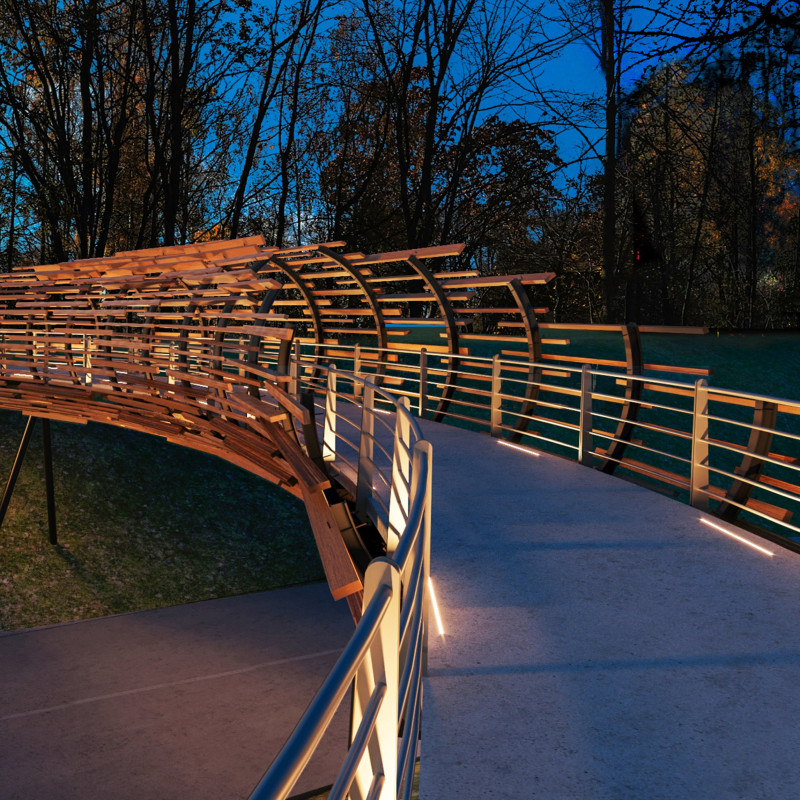5 key facts about this project
The Wooded Pathway is an architectural project designed to enhance accessibility and interaction within Gauja National Park, Latvia. It serves as a pedestrian pathway that connects urban areas with the natural environment, facilitating movement and exploration. The project utilizes a cohesive blend of materials and design principles to harmonize the structure with the surrounding landscape, creating a functional and aesthetically pleasing route for visitors.
The design of the Wooded Pathway emphasizes sustainability and ecological integration. It represents a commitment to preserving the natural landscape while providing a space for community engagement. The pathway invites users to experience the beauty of the park and encourages outdoor activities, reinforcing the connection between people and nature.
Unique Design Approaches
The project distinguishes itself through its use of organic forms and efficient material selection. The undulating structure features curved and angled wooden ribs that echo the natural topography of the park. This design promotes fluid movement, allowing visitors the opportunity to navigate the pathway while experiencing varying perspectives of the forest ecosystem.
The primary materials used in the construction of the pathway include different types of timber, such as pine, birch, and fir, which not only enhance the visual quality but also provide durability. A concrete foundation ensures the stability of the structure, while steel elements are incorporated in handrails and supports to enhance safety and longevity.
Additionally, the design integrates LED lighting along the pathway, facilitating safe use during evening hours. Accessible ramps and smooth transitions further ensure that the pathway accommodates all users, including those with mobility challenges.
Integration with Nature
A significant aspect of the Wooded Pathway is its intentional alignment with the surrounding environment. The project employs sustainable design methods to mitigate environmental impact, including measures for snow management and minimal disruption to existing flora. The fluid connection between urban areas and natural landscapes highlights a thoughtful approach to architectural interventions within protected areas.
To gain deeper insights into the project's architectural plans, sections, and overall design philosophy, readers are encouraged to explore the full presentation of the Wooded Pathway. The exploration of these elements reveals the thoughtful architectural ideas underpinning this unique project.



























